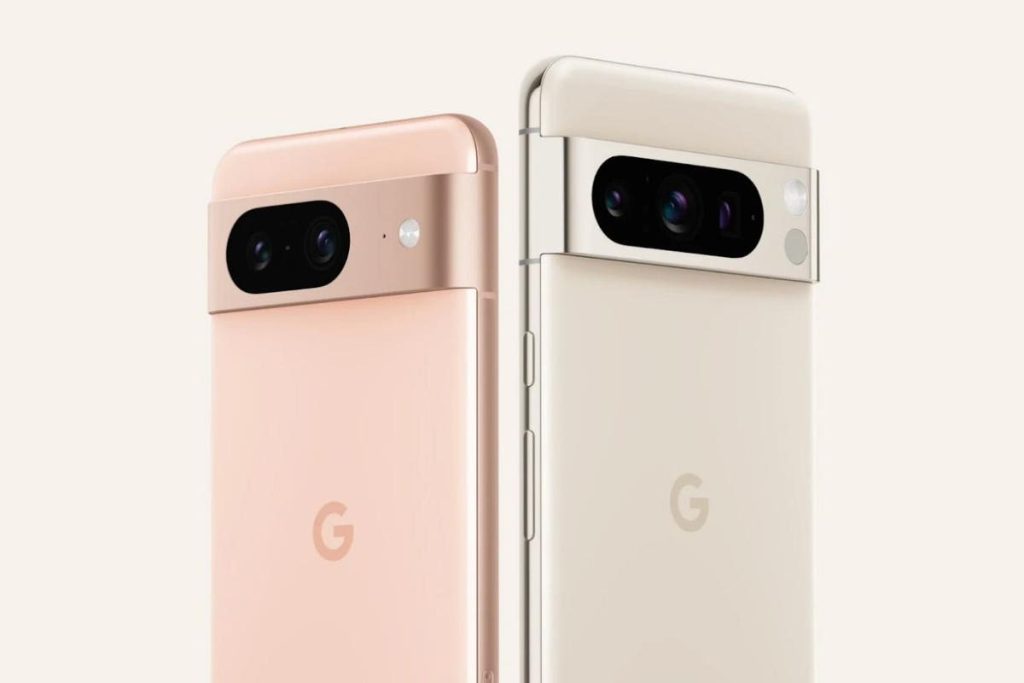Excitement is building for the imminent release of Google’s next-gen Pixel 8 and Pixel 8 Pro smartphones, which promise some powerful camera upgrades, according to the latest leaks.
However, the standard Pixel 8 looks likely to miss out not only on some of the advanced hardware features of the Pro model but, disappointingly, on some powerful software improvements, too.
The latest information ostensibly comes from Google itself in the form of an official-looking promo video for the Pixel 8 series unearthed by prolific Pixel leaker Kamila Wojciechowska, who shared the video exclusively with 91Mobiles along with claimed screen grabs of the forthcoming Google Store pages for the unreleased smartphones.
The promo video introduces several previously unseen camera features coming to the Pixel 8 range (see below) and also confirms several earlier leaks, including Night Sight mode for video, “Best Take” photo merging and a new Audio Eraser function for eliminating distracting background noises. Google’s Real Tone skin-tone matching feature is also being expanded to video.
The first brand new feature to be revealed is Video Boost, which, according to the narrator, will deliver “a smoother view” for video recording. However, it appears to provide much more than a mere smoothing effect: the promo video shows a section of unpleasantly dark and shaky footage that, at the touch of a button, becomes not only fully stabilized but also much brighter and clearer.
According to Wojciechowska’s screen grabs, this feature “automatically adjusts color, lighting, stabilization and graininess to make every moment more cinematic.” It is scheduled to arrive “soon” after launch and will be implemented via the Google Photos app, which means it could potentially become available in a broader range of smartphones.
The most significant boost to video recording, however, is likely to come in the form of a new Night Sight mode for video.
Night Sight for video could bring significant improvements when recording in low-light situations such as parties or dinner dates. The promo video reveals a striking improvement in both brightness and color reproduction when the function is enabled. No specific claim is made as to whether the effect as seen in the video is real or simulated, but if real-world results turn out to be as impressive as this demo, Night Sight for video will make a substantial impact. However, it’s not known at this point what possible limitations may come into play in terms of resolution and or framerate when using this mode.
Unlike Video Boost, Night Sight for video will be applied during recording and relies on the upgraded camera hardware of the Pixel 8 Pro to function.
The Pixel 8 Pro model is also expected to gain new “Pro level” DSLR-like photography controls. We can see some of these in action in the promo video, which reveals individual shutter speed, ISO, manual focus controls, and a dedicated “reset” button.
These new controls should allow the creative use of photographic effects, such as slow shutter speeds to capture deliberate motion blur, paired with lowered ISO values to increase image quality when using a tripod. Manual focus can prove invaluable when shooting close-up images or for counteracting the camera’s tendency to lock focus on the wrong subject – something that can happen all too often when using the current Pixel 7 Pro’s telephoto lens.
Once again, further information is provided in the leaked Google Store pages, which reveal that Google’s Pro controls will also unlock the ability to shoot “full-resolution” images for richer detail.
It’s disappointing to see the Pro controls feature limited to the Pixel 8 Pro. Manual controls such as these are commonplace on other smartphones. I can see no technical reason why the standard Pixel 8 should be excluded, as it contains very similar camera hardware to the Pro Model.
However, as these features appear to be enabled purely through software, there’s always hope that Google will bring “Pro” controls to other Pixel models in future updates.
It’s unfortunate that the base Pixel 8 model, as it stands, appears to be artificially limited in ways that might catch unwary customers out. We’ll find out for sure on October 4, nonetheless.
Follow @paul_monckton on Instagram
Read the full article here










